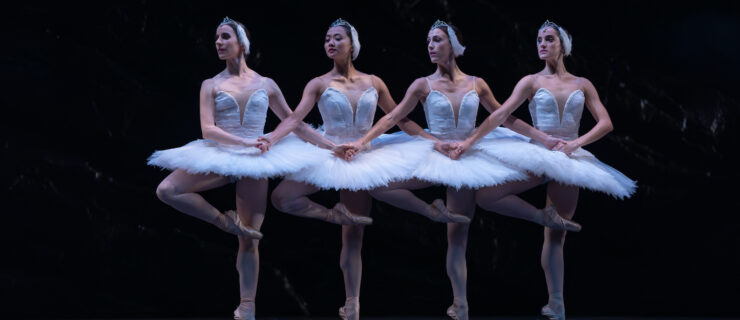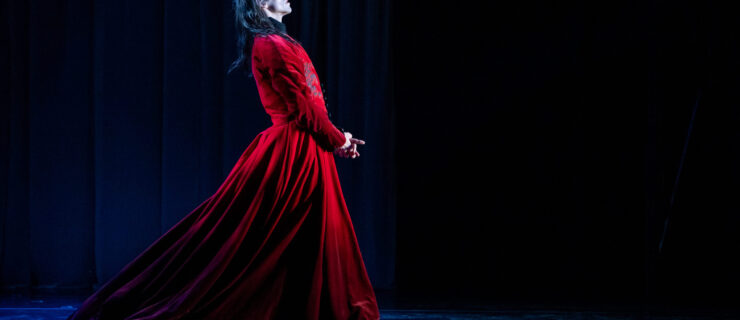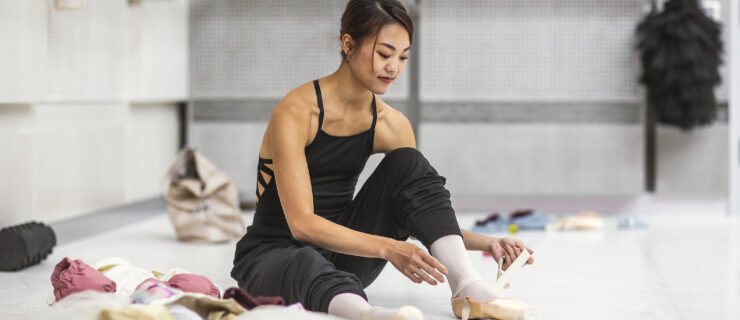For Queer Women in Ballet, There's a Profound Gap in Representation. These Dancers Hope to Change That.
In her teens, Lauren Flower realized she was different. Originally from Fresno, California, Flower moved to Arizona and trained with Tucson Regional Ballet and the school at Ballet Arts Tucson before accepting a scholarship with Houston Ballet II. It was in Houston that Flower started to think she might be gay, but didn’t feel she had anyone to talk to about it.
“I quickly shot all those feelings down,” says Flower. “I was petrified. I thought no one would get it or understand what I was realizing about myself.” When she returned to her home state to join Ballet Arizona in 2013, Flower remained closeted in her professional life. But she began to meet other queer women outside of ballet who helped her to embrace her identity. At age 22, Flower came out and joined Boston Ballet shortly afterward, committed to being fully out of the closet in her life there.
Flower says getting involved in the LGBTQ community made the absence of queer women in ballet more apparent to her. While there are plenty of examples of queer people in the dance world, Flower says ballet in particular is lacking role models for gay women. (Katy Pyle’s company, Ballez, is a notable exception.)
Traditional ballet companies do not typically shy away from celebrating the gay community, but for women there is a profound gap in representation. Earlier this year, a friend pointed out to Flower that Boston Ballet was featuring its gay male dancers in a series of Instagram posts celebrating Pride Month. No one approached Flower, one of two openly gay women in the company, about contributing to the social media campaign. It was only after bringing it up to the PR team that she was included.

“This isn’t about queer men vs. queer women, because we both have our struggles and need allies,” says Audrey Malek. Malek, who just finished her second season in The Washington Ballet Studio Company, says she came out gradually. “My mother raised me to have thick skin as a Black woman in this world, so being an openly gay Black woman, I’ve taken that strength to become more carefree when it comes to other people’s opinions of me,” Malek says. “Nevertheless, I have definitely experienced all different forms of homophobia. But at The Washington Ballet, I’m thankful to have felt support from my colleagues and teachers.”
Flower and Malek are open about their sexual orientation on social media. Both say they don’t feel that being gay has overtly held them back in their careers. And a landmark Supreme Court ruling this June determined that the Civil Rights Act applies to discrimination on the basis of sexual orientation.
“We have come a long way,” says Malek. “Yet, it’s still harder for women to have our voices heard. There’s an unfair and damaging stereotype that lesbians are only interested in sports that are deemed more masculine.”
 Lauren Flower in the studio. Brooke Trisolini, Courtesy Boston Ballet
Lauren Flower in the studio. Brooke Trisolini, Courtesy Boston BalletFlower says such stigma, along with the stereotype about ballerinas being demure and ultrafeminine, are part of why lesbian dancers are still hesitant to come out. “Because of the hierarchy in a lot of ballet companies, there’s a lot of fear—especially when so many artistic directors are men—that queer women might be looked at differently. It’s just the honest truth; it’s something I’ve heard from women I know who are still closeted. We need to feel like we can thrive and live authentically.”
Despite this fear, Flower and Malek say being out hasn’t resulted in being overlooked for certain roles. “As of now, I don’t feel as though I’ve been typecasted, and hope I don’t get that in the future,” Malek says. “And I’m definitely not afraid of what others think of me.” Flower says she enjoys portraying feminine roles onstage.
The question of representation remains. What should ballet companies do to improve the visibility of all its LGBTQ dancers beyond inclusive social media campaigns?
 Malek and Rafael Bejarano perform Swan Lake. xmb Photography, Courtesy The Washington Ballet
Malek and Rafael Bejarano perform Swan Lake. xmb Photography, Courtesy The Washington Ballet
One solution is to continue to diversify leadership. Giving queer women a seat at the table, with opportunities to direct, choreograph and sit on a board of directors will ensure that their stories and perspectives are shared onstage. In 2018, Flower was part of Boston Ballet’s ChoreograpHER initiative highlighting women in the company. While her piece did not directly address her sexuality, Flower plans to continue choreographing and hopes that ballet companies will begin to create programs that specifically promote queer women. “I’ve never seen that, on any platform,” she says. “I want to explore same-sex pas de deux. I want to bring that uncomfortable side of queer sexuality to audiences. That’s what is needed for people to see and question things.”
After three seasons with Boston Ballet, Flower moved back to Arizona, where she is working toward a psychology degree. Inspired by the response to her social media posts, she launched a blog to create more space for LGBTQ dancers’ stories. In the next phase of her career, Flower is committed to advocating for dancers and creating the support system that she wished she had had when coming out.
In Flower and Malek, queer and questioning young dancers have the benefit of positive role models that hopefully challenge any fear they might have about coming out. “People need to know that there are queer women in ballet,” says Malek. “The more we talk about it, the safer the next generation will feel to have these conversations.”





